| Adineta cf acuticornis, creeping specimen, dorsoventral view. Visible are the long acute spurs with interspace. (ratio IW : SBW≈ 1). (1) |
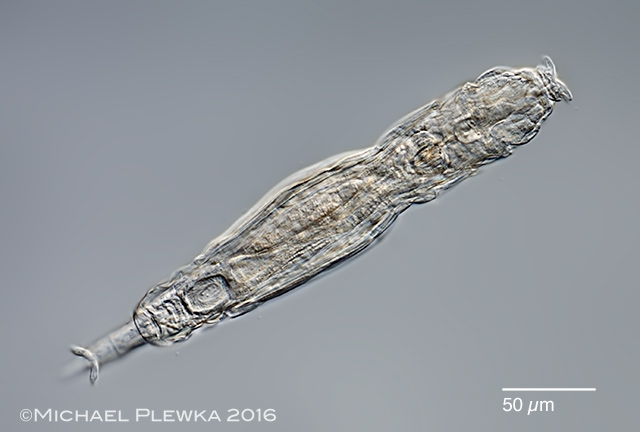 |
| Adineta cf acuticornis, gliding specimen, dorsoventral view. Even when fully stretched, this morphotype has an appendage of the rump pseudosegment. (1) |
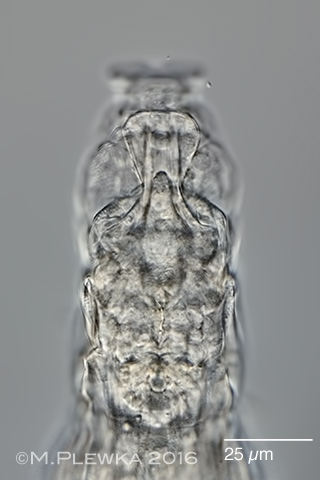 |
| Adineta cf acuticornis, aspect of the head, dorsal view; focus plane on the dorsal ridge.(1) |
 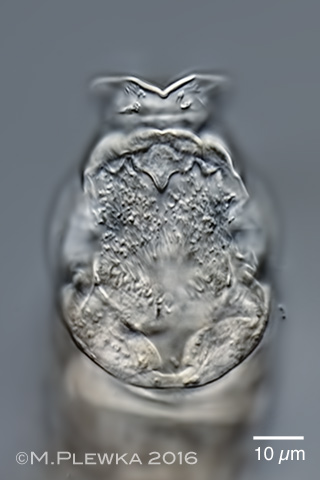 |
| Adineta cf acuticornis, two aspects of the head, ventral view of the ciliary field and the rake apparatus with 6 U-hooks each. (1) |
| |
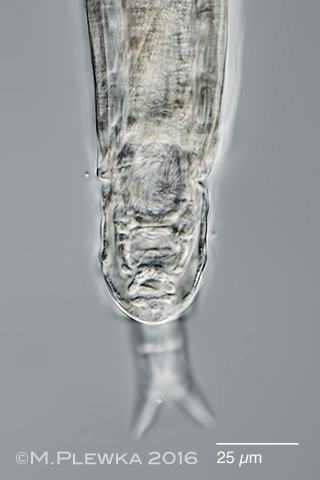 |
| Adineta cf acuticornis, detail of the rump pseudosegment.(1) |
| |
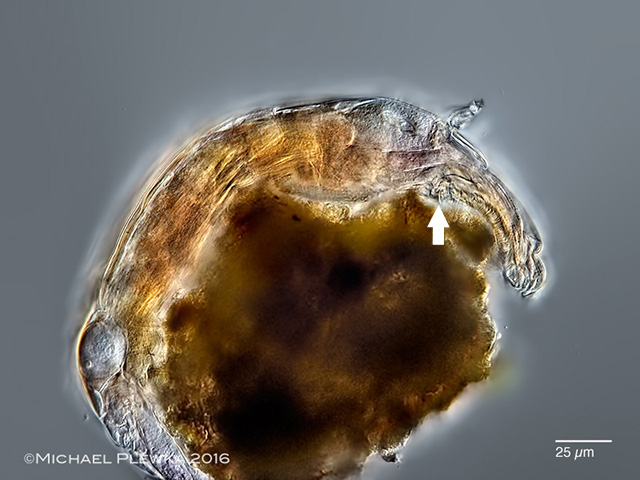 |
| Adineta cf acuticornis, feeding behavior; in the literature the function of the rake apparatus is described as a tool for scraping off bacteria or other diet from the substrate Adineta is gliding on. But this may be an artefact, because in nature it is very unlikely that Adineta is gliding on a substrate like the glass of the microslide. If one observes Adineta with binoculars in the natural habitat one can see this critter gliding around smaller particles like the one here. The backward movement of the cilia would move the particles away, but the denticles of the rake apparatus are the counterpart of the cilia movement so that the particle is permanentely turned around, so that Adineta can wipe of bacteria from the particle. (2) |
| |
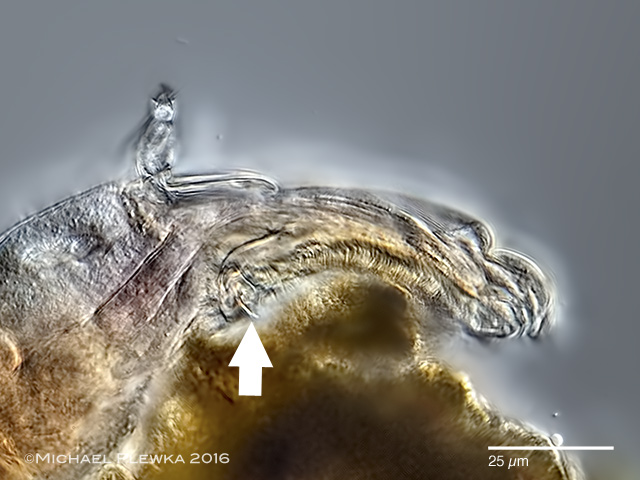 |
| Adineta cf acuticornis; crop of the above image. The arrow points to the denticles of the rake. (2) |
| |
| |
|
| Location : Hattingen Oberstüter, roof (1); Hattinge Oberstüter, garden (2) |
| Habitat: dry moss on roof (1); moss on apple tree (2) |
| Date: 26.02.2017; 03.10.2016 (2) |